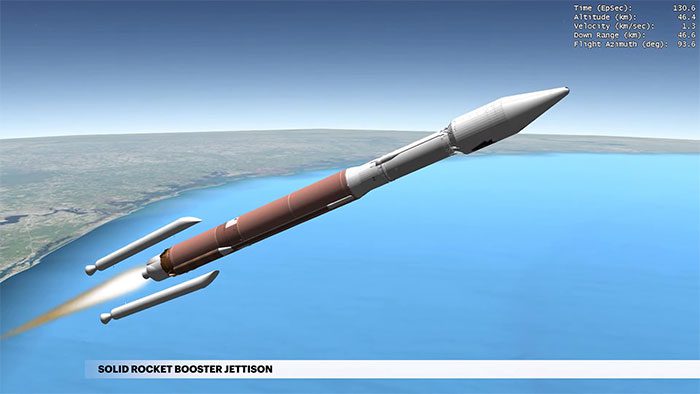The United States Space Force has successfully launched its final early warning missile satellite into space, completing the “Space-Based Infrared System (SBIRS).”
According to CNN, at 6 AM on August 4, the United Launch Alliance launched the Atlas V rocket from a launch site in Florida, carrying the last missile warning satellite of the Space-Based Infrared System (SBIRS) into orbit.

The SBIRS system can provide global coverage 24/7
This is the sixth satellite of the SBIRS system, code-named SBIRS-GEO-6, capable of detecting ballistic missiles launched from anywhere in the world.
The SBIRS system, designed by Lockheed Martin to replace the aging early warning satellites of the Defense Support Program (DSP) – the first of which was launched over 50 years ago. Following the successful launch of SBIRS Geo-6 on Thursday, SBIRS will consist of three satellites in geostationary orbit (GEO) and two additional classified satellites in highly elliptical orbit (HEO) around the poles. The first satellite in the SBIRS was launched in 2011, and the most recent, SBIRS Geo-5, was placed into orbit aboard an Atlas V rocket in May 2021, also from Cape Canaveral Space Station.
Compared to previous-generation early warning missile satellites, the scanning speed and sensitivity of SBIRS have increased more than tenfold, and the coverage range has doubled to four times. Early warning information is sent to the ground control operations system, while the previous “Defense Support Program” satellites required 60 to 90 seconds, significantly shortening the early warning time and giving the U.S. military sufficient time to prepare for missile defense, thus improving the success rate of intercepting threats.
CNN reports that the SBIRS system can provide global coverage 24/7, monitoring global missile launches and issuing critical early warnings about potential threats to U.S. fighter aircraft. For instance, when Iran launched dozens of ballistic missiles at bases in Iraq in January 2020, the satellite systems provided last-minute alerts to U.S. and allied forces. In 2019 alone, the system detected nearly 1,000 missile launches.


















































